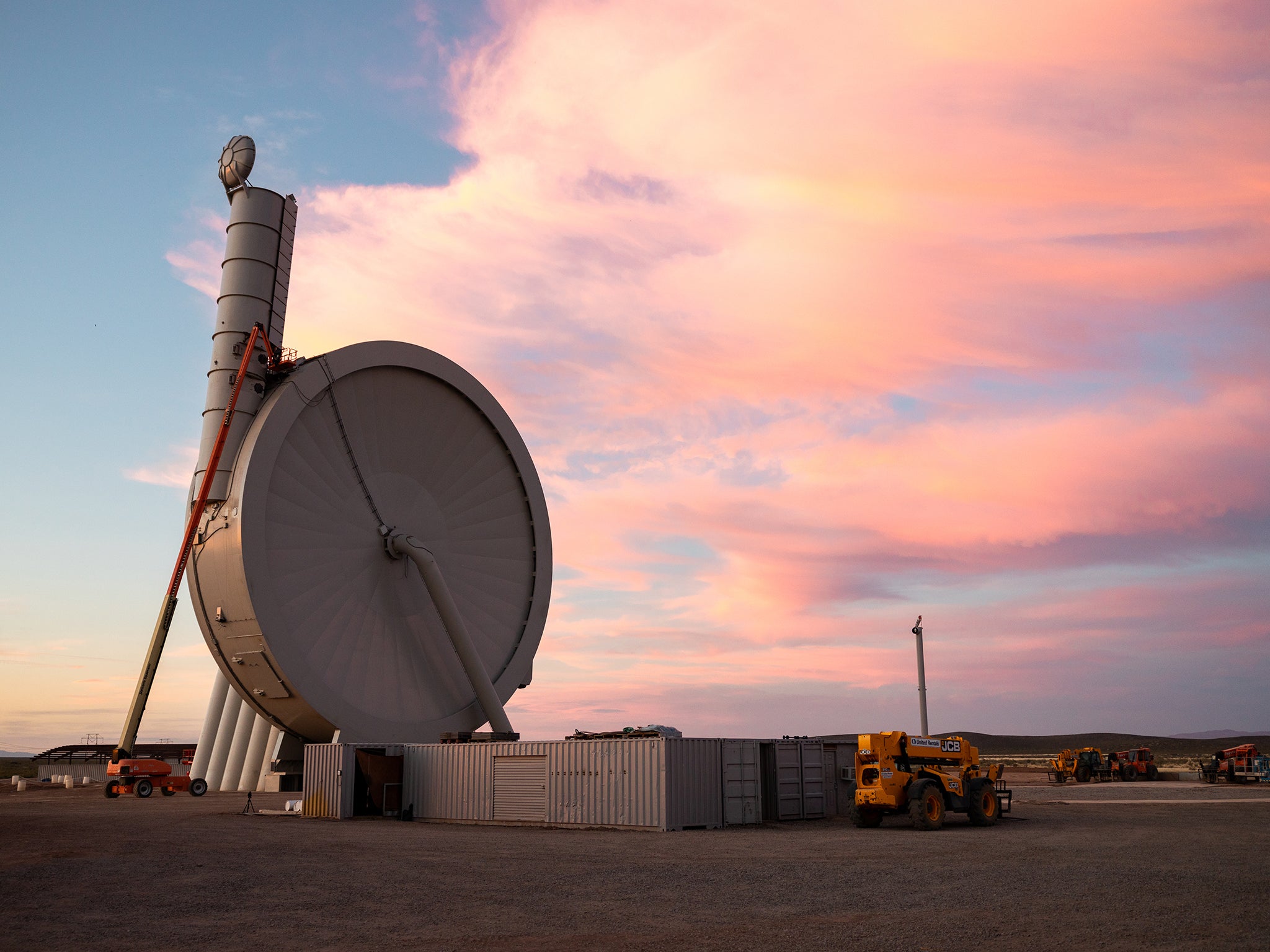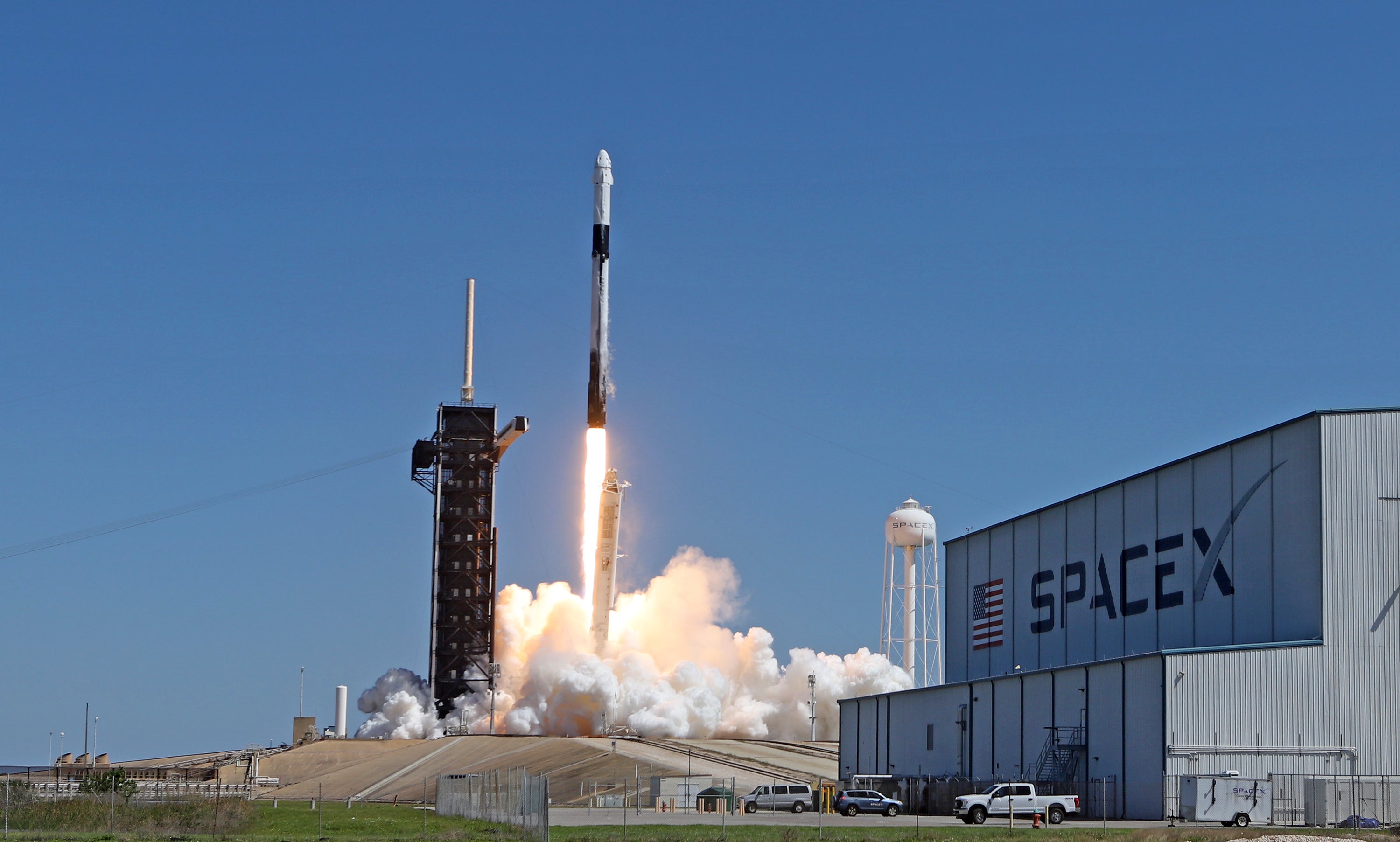How to catapult a rocket into space – a new dawn or just more hype?
Californian start-up SpinLaunch has come up with a potential answer to one of space exploration’s biggest questions: how to fire rockets into space sustainably. Steven Cutts explores just how they are trying to do it


For decades the space race appeared to have stagnated. While there was never any shortage of new projects, none of them seemed to go further than the missions that had already been flown and, by some criteria, the actual cost of launching a satellite had changed little since the days of President Kennedy.
Now things are different. A number of hi-tech start-up companies are trying to make their mark and the industry is in danger of real disruption. Better still, the absolute amount of space activity looks set to soar. To date, the world has sent 10,000 satellites into orbit but within the foreseeable future, we may regard 10,000 launches per year as the new normal and the market for next-generation launch vehicles will be huge.
SpaceX appears to have significantly reduced the cost of each launch by retrieving and reusing the first stage of their rockets many times over. Doubtless innovations to the SpaceX fleet will reduce costs further, but for the precipitous reductions in cost that will be required for very large-scale activity, we’re going to have to do something entirely different.
In principle, at least, this ought to be possible. Elon Musk has pointed out that 1 per cent of the cost of launching a space satellite is fuel. If we could re-use the hardware ad infinitum and with minimal maintenance fees then the cost of space travel ought to fall by around 99 per cent (incidentally, even 1 per cent of current costs would be expensive).
As things stand, it’s almost impossible for any one rocket to reach orbital velocity. Instead, the engineers have simply stacked one rocket on top of another in the sure and certain knowledge that the first stage will simply crash into the sea and that the upper stages will eventually make it into orbit.

The ideal situation here would be to build one machine that could reach orbit without staging and then return to the Earth intact. Thus far, this ambition has proved elusive and most of the groups that have attempted to do exactly this build a two-stage vehicle and try to disguise the first stage as something else.
One way to do this is using a type of catapult. Since the beginning of the space age, there have been attempts to launch spacecraft from high-speed rail systems. For example, the iconic ark-like spaceship that appears in the sci-fi classic When Worlds Collide used exactly this technique. The concept was usually combined with a ramp or even a small mountain to deliver a vertical component of velocity.
In more recent years, many engineers have looked beyond rocket-propelled sledges toward a future where the spacecraft would begin its journey on a magnetically levitated train. High-speed electrically levitated trains have been in development for many years now and are already capable of speeds of up to several hundred miles/h. Some designs envisage a train that ascends a steep slope or mountain where the upper stage of the launch vehicle separates from the railed vehicle, perhaps a mile high. By now the vehicle is already travelling at several hundred miles/h. In effect, the rocket or magnetically levitated sledge represents the first stage of the machine and the advantage of this technique is that the sledge itself can be easily retrieved and re-used. This extra bit of boost might just be enough to transform the performance of the actual rocket, perhaps even enough to reach outer space without further staging.

While some of these concepts sound like science fiction, others are now in widespread use. The American Navy has long used steam-powered catapults to sling jet aircraft off the deck of an aircraft carrier. However, in more recent years, the US Navy has been using electromagnetically powered rail guns to throw their aircraft and pilots into the air. Even the largest aircraft carrier in the world represents an alarmingly short runway and the process of both takeoff and landing is usually augmented by special tech on the deck.
Given that magnetic rail guns are pretty much standard on an aircraft carrier, how easy would it be to use an electromagnetically propelled track to launch our space rockets? Well, such a system would need to be at least several miles long and would have to be built close to a conveniently located mountain. In addition, it would require an astonishing amount of electrical power to achieve the acceleration involved. Needless to say, for the rocket scientists of this world, neither of these two issues is much of an obstacle.
The physics of the slingshot technique are relatively easy to understand but the technology required to make it fly is a different matter
Now – in the third decade of the 21st century – comes something completely different. An American start-up company, SpinLaunch, is not only planning but actually building an entirely new kind of launch facility. They intend to launch small, unmanned satellites into orbit for less than half a million dollars at a time.
This approach relies on a spinning axle that hurls the rocket and its attached satellite into the lowest reaches of the Earth’s atmosphere. If you’re having difficulty buying into this idea, think of a huge guy in a kilt in the middle of the Highland games. The guy in question is competing in the event to throw a huge hammer as far as possible across an empty field. Let’s face it, he isn’t going to do it in one fell swing. No, he’s going to hold the hammer in both hands and spin on the spot. After a few cycles, he flings the thing upwards and releases at just the right moment.
The sort of speed and height required to make any difference to space flight is a lot more than your best Highland athlete can ever imagine. In order to do this, SpinLaunch will construct the largest centrifuge in history. The device spins on a central axis using an electric motor until the tangential component of speed at the tip of the spinning arm is about Mach 7. Reaching such speeds would surely be compromised by friction against the Earth’s atmosphere, and, with this in mind, the engineers have thoughtfully sealed the centrifuge inside a cylindrical box with a vacuum pump on the side.

Once the air inside the chamber has been completely eliminated, the wheel begins to spin on its own axis, faster and faster over a period of several hours. In effect, the fantastical chemical energy that is stored in the first stage of a conventional space rocket is stored here as kinetic energy in the huge angular momentum of a fast rotating wheel.
Then, when the arm is spinning at around 480 rotations per minute and the moment of launch has finally arrived, the wheel releases the rocket and flings it through a narrow cylinder that is built into the side of the device. The whole construct looks like a hair dryer balanced at an angle on the side of a small hill. The launch tube is sealed with a tense membrane, rather like the surface of a drum. The membrane is strong enough to hold back the pressure of the Earth’s atmosphere, but weak enough to allow the rocket to punch directly through it and continue upwards with the bulk of its momentum intact.
From this moment on, the rocket ascends under its own momentum without consuming fuel. Studies have shown that it is virtually impossible to launch a satellite into orbit using this technique alone. In particular, the friction against the Earth’s atmosphere at the moment of launch is going to be pretty incredible and momentum will be lost very quickly indeed. However, early tests of a sub-scale system in the American desert have managed to hurl a test projectile to 30,000ft. This isn’t anywhere near enough to get you into low-Earth orbit, but it has proved useful as a technology demonstrator. SpinLaunch is now in talks with both Nasa and the US Department of Defence. They are even building a new full-sized system capable of launching into low-Earth orbit. Such a system will be around 100m in diameter and involve accelerations at launch of over 10,000 gravities, at least a thousand times greater than any human could take.

Even at full size, the missile will simply rise to a very high altitude and then follow a parabolic trajectory back to Earth. In order to reach orbit, the rocket will have to ignite halfway up in the upper atmosphere and power the cargo to a final orbital speed of 17,000 miles/h. However, the total amount of fuel required for such a launch is less than 20 per cent of that used by a conventional rocket and the Americans seem confident that a system of this kind could launch cargos of up to 200kg into low-Earth orbit at very low cost.
In pursuing such a strategy, the Californian-based start-up took inspiration from data that was gathered during the Cold War using oversized artillery pieces. Harp (High Altitude Research Project) was a joint project between the American and Canadian governments that sought to launch adapted cannon shells into the upper atmosphere. These tests demonstrated the feasibility of sending an object to an altitude of 180km (Harp still has the world record for this feat). All this in spite of the fact that the exit velocity at the muzzle of the weapon was in excess of 5,000 miles/h and the atmospheric drag thereafter must have been off the scale. The projectiles used in the Harp project experienced 15,000 gravities at blast-off and were still able to contain scientific instruments that sent useful data back to Earth. What SpinLaunch is trying to do now is pretty much the same as Harp using cold angular momentum instead of explosives.
That isn’t to say the launch site itself couldn’t explode. Cynics have pointed out that the amount of kinetic energy stored in the spinning device is immense and that if the projectile misses the exit tube by the tiniest fraction, then the entire construct will self-destruct. Others have questioned what kinds of payloads we could realistically launch using this kind of approach. Given the consdierable g-forces at take-off, human cargo would be out of the question. There are, however, a plethora of potential satellites that could stand up to these forces.
Solid-state electronics and solar panels are remarkably resilient in the face of high g-forces and if the economic cost of space launches fall dramatically, the number of potential uses for orbiting satellites would soar. It has been suggested that individual launches could be achieved for less than $500,000 a time. Similarly, future large-scale projects could be supplied by multiple separate payloads. Food, water and rocket fuel could be launched in a series of pulsed projectiles launched in rapid succession. Once in orbit, they could be swept up by tugs and herded to a specific destination such as a space station or a larger spacecraft awaiting refuelling missions to allow it to voyage beyond low-Earth Orbit.
It is sometimes said that physicists have great dreams but engineers make them come true. The physics of the slingshot technique are relatively easy to understand but the technology required to make it fly is a different matter. Space travel has promised so much for so long that the field is awash with naysayers and sceptics. In recent years and with the advent of well-funded private space companies, a number of groups have done something different. They are actually building hardware and testing machines. Yes, some of these machines will fail, but at least some of them will succeed. This hands-on, make-it-happen approach is going to be essential if we want to leave this planet and make real headway on the next frontier.




Join our commenting forum
Join thought-provoking conversations, follow other Independent readers and see their replies
Comments